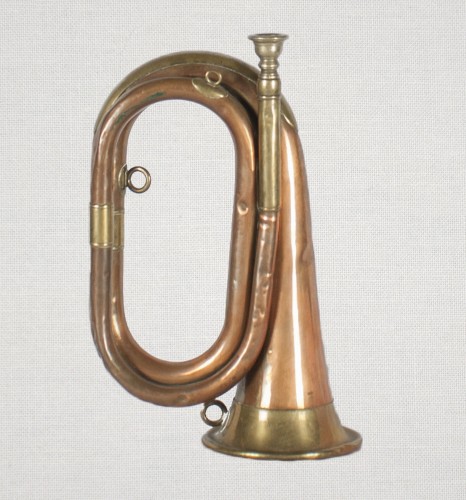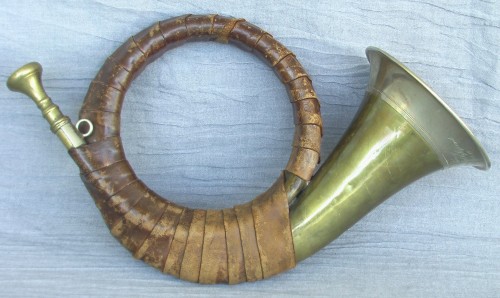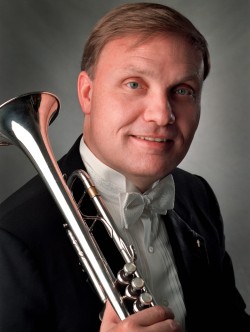I have often claimed that procrastination was one of my hobbies, As I sit down to write this February column, though, I can honestly say that Mother Nature offers me no pleasant alternatives to sitting down at the keyboard. Today, with snow, ice and nasty cold temperatures, getting down to writing is by far the most pleasant of tasks. Welcome to real winter.
Looking back
In contrast to the weather, January was a very mild musical start to 2019, with no significant musical events on my agenda other than some rehearsals. Looking a little further back, however, in December I had the privilege of attending several entertaining seasonal concerts which were too late to report on in the December issue of The WholeNote.
The first of these was the annual Christmas Soiree of the Silverthorn Symphonic Winds. It was a short but very entertaining program of their favourite Christmas delights. The Wilmar Heights Event Centre is a small but very warm and inviting venue, particularly for that event, where audience members mingled with band members during intermission to overindulge in the many taste treats offered.
As for the Wychwood Clarinet Choir, now in is tenth season, their repertoire spanned a few centuries from Rossini’s L’Italiana in Algeri and Tchaikovsky’ Dance of the Sugar Plum Fairy to Leroy Anderson’s Sleigh Ride. One of the highlights of the program was Schubert’s Shepherd on the Rock featuring soprano soloist Christina Haldane and clarinetist Michele Jacot. Roy Greaves and Richard Moore deserve special credit for their excellent arrangements of these works for clarinet choir.
Covey of partridges
Highlights of several of the festive season concerts which I attended were performances of the Twelve Days of Christmas (the festive days starting on the evening of Christmas Day on December 25 through Epiphany on January 6). In each case audience members were asked to pick a number corresponding to their birth month. Those born in January were identified with one, February two and so forth. In one case, audience members were then asked to stand up while the verse for their day/month was performed. In another case, audience members were asked to take any keys from their purses or pockets, hold them up and jingle them when their number was called.
The Resa’s Pieces Gala, in which members of the combined band and string orchestra played on the floor with the choir onstage, had the most imaginative approach. Audience members stood for their month, but at each appropriate moment, 12 members in the front row of the choir, facing the audience, raised large red cards, with pictures representing the words for each of the days.
As to the origin of the song, it’s generally agreed that it arose in England, perhaps as a coded catechism song from the era when Catholicism was outlawed there (1558-1829), and that each line symbolizes a tenet of the Catholic faith. Setting aside the dozens of learned line-by-line interpretations, the truest meaning of this cheerful song for me is the opportunity it provides for audience involvement in music making.
Back to Bugles
My grumble in the December issue about bugle calls not being played on bugles, but on trumpets got quite a response, for and against my comments.
In my life I have heard many bugle calls, but never played on a bugle myself. My first association with the instrument was in high school where, one day a week, almost every boy in the school, dressed in the full kilted highland uniform of our cadet corps, was part of the bugle band (bagpipes being too expensive and too difficult to maintain). Since I was already a trombone player in a boy’s band, not associated with the school, however, I missed out on this glorious opportunity. Some years later, I served aboard HMS Sheffield, the Admiral’s Flagship of the American and West Indies Squadron. We had a Royal Marine Band aboard as well as a few buglers. All orders over the ship’s sound system were preceded by the appropriate bugle call.
 The most interesting of the comments I received came from reader Robert Frankling. In his opening salvo he states in part: “The question you raised of the too-seldom use of bugles in military units has nothing whatsoever to do with the expense, but everything to do with an unjustified anti-bugle snobbery and laziness of trumpet players to practise on the bugle, a tough instrument to master.” In his message he mentions that he has played the trumpet since age 13 and the bugle since late middle age. Now, at 67, he tells me that he has done “a fair bit of bugling in the last 30 years mostly for military events and funerals.”
The most interesting of the comments I received came from reader Robert Frankling. In his opening salvo he states in part: “The question you raised of the too-seldom use of bugles in military units has nothing whatsoever to do with the expense, but everything to do with an unjustified anti-bugle snobbery and laziness of trumpet players to practise on the bugle, a tough instrument to master.” In his message he mentions that he has played the trumpet since age 13 and the bugle since late middle age. Now, at 67, he tells me that he has done “a fair bit of bugling in the last 30 years mostly for military events and funerals.”
“Ultimately, the reason more trumpet players do not play on the bugle,” he says, “is because they can’t, and they can’t because they won’t practise on the bugle enough to master this tricky instrument. They just pick up a bugle, try it once and say it sounds terrible, but that is because of the performer, not the fault of the instrument. Due to their ignorance of the bugle’s history and their unjustified snobbery, [they] consider the bugle to be beneath their dignity ... something that only an unsophisticated rube would use!”
(Taking Mr. Frankling’s comments about the bugle being harder to play than the trumpet, into account, the title of Leroy Anderson’s Bugler’s Holiday takes on a new meaning. Could it have been that buglers, tired of playing their more challenging instruments, were being offered a welcome day off?
 As for the instrument’s venerable history, the modern bugle can trace its origins to the Roman bugle around the fourth century A.D. as early musical and communication instruments made from animal horns with a narrow opening cut at the tip. (The word bugle itself comes from buculus, the Latin for bullock, a castrated bull.) Just as in today’s instruments, the tone was produced by pursing the player’s lips against this narrow opening and producing a buzzing sound, with the horn acting as resonator of the sound, and the pitch dependent on the length of the air column in the horn. At some stage, someone decided to make a horn out of metal. A late Roman metal bugle, found in 1904 at Mont Ventoux in France, and now in the British Museum, is bent completely around upon itself to form a coil between the mouthpiece and the bell end. (In the case of this British Museum specimen, the bell end was broken off some time in the long and distant past).
As for the instrument’s venerable history, the modern bugle can trace its origins to the Roman bugle around the fourth century A.D. as early musical and communication instruments made from animal horns with a narrow opening cut at the tip. (The word bugle itself comes from buculus, the Latin for bullock, a castrated bull.) Just as in today’s instruments, the tone was produced by pursing the player’s lips against this narrow opening and producing a buzzing sound, with the horn acting as resonator of the sound, and the pitch dependent on the length of the air column in the horn. At some stage, someone decided to make a horn out of metal. A late Roman metal bugle, found in 1904 at Mont Ventoux in France, and now in the British Museum, is bent completely around upon itself to form a coil between the mouthpiece and the bell end. (In the case of this British Museum specimen, the bell end was broken off some time in the long and distant past).
The use of these instruments as signaling devices, particularly in military operations, goes back to its earliest days. The ancient Roman army used an instrument called the buccina. Centuries later, the purpose of the bugle was laid out in Niccoló Machiavelli’s 1521 treatise Libro dell’ arte della guerra (The Art of War), in which he wrote that the commanding officer should issue orders by means of trumpets because their piercing tone and great volume enabled them to be heard above the pandemonium of combat. The first verifiable formal use of a brass bugle as a military signal device was the Halbmondblaser, or half-moon bugle, used in Hanover in 1758. It first spread to England in 1764 where it was gradually accepted widely in foot regiments.
Bugles, and various types of trumpets or horns, without valves or keys, produce only limited notes (usually five) with the pitch of the lowest note being the resonant frequency of the horn, based on its length, and the other notes being harmonics of that.
Historically, the bugle was used in the army to relay instructions from officers to soldiers during battle. They were used to assemble the leaders and to give marching orders to the troops. During peace time the bugle call was used to indicate the daily routines of camp. When I served in HMS Sheffield, we had several Marine buglers, as well as a full Royal Marine Band, as befitting the Admiral’s Flagship. All routine orders throughout the day were by the specific bugle call for such times as “sunrise, hands to supper, lights out, sunset” etc.
 One of the most significant early peacetime uses of the instrument was the post horn, to signal the arrival in town of the postman with the mail. The original post horn had no taper until right at the bell and the tubing was straight and narrow. Its sound is so significantly different and appealing that many composers have written works for the post horn either as a featured solo instrument or to add an unusual voice in their composition.
One of the most significant early peacetime uses of the instrument was the post horn, to signal the arrival in town of the postman with the mail. The original post horn had no taper until right at the bell and the tubing was straight and narrow. Its sound is so significantly different and appealing that many composers have written works for the post horn either as a featured solo instrument or to add an unusual voice in their composition.
Mozart composed his “Posthorn” Serenade in 1779. Another example of post horn use in modern classical music is the off-stage solo in Mahler’s Third Symphony. In the world of band music the Post Horn Gallop, written in 1844 by the German cornet player Hermann Koenig as a solo for post horn with orchestral accompaniment, is a favourite, if a post horn and player are available. Due to the scarcity of post horns (and competent players), music written for it is frequently played on a trumpet, cornet or flugelhorn. Which of course, brings us back to my original bugler’s lament in December, which got this thread going.
Over the years, the British Army has retained the bugle for ceremonial and symbolic purposes. In the Canadian forces, there was still the rank of “Bugler” until 1945, when the regimental trade of bugler was discontinued in the Canadian Army. Hence, bugle calls are now played on trumpets because the bugles went when the buglers went.
By the way, to see the most amazing array of bugles, horns, trumpets and their valved and unvalved relatives, developed over the ages, one would have to be lucky enough to be able to visit that portion of Henry Meredith’s vast collection in London, Ontario. Hopefully that collection will find a suitable museum as home in the near future.
New Horizons
So far we haven’t heard anything about the activities of the numerous Toronto New Horizons groups, but have received a fine update from Doug Robertson for the York Region groups. In an invitation for new members, he has suggestions for potential new members with references to Your New Year’s Resolution and Your Bucket List. He summarizes some of the many benefits, particularly for retirees, of learning to play an instrument in a group. He reminds people that it’s never too late, and it has the many advantages of remaining active, having fun with other adults, making new friends, and improving memory. Their group classes are on Monday evenings at Cosmo Music in Richmond Hill. For information, contact Doug Robertson,
nhbyrdirector@gmail.com or at 416-457-6316.
BANDSTAND QUICK PICKS
 FEB 10, 3PM: The Hannaford Street Silver Band presents “From Russia with Brass” including The Festive Overture, The Procession of the Nobles, Polovtsian Dances and others. Philip Smith, conductor and trumpet soloist. Jane Mallett Theatre, St. Lawrence Centre for the Arts.
FEB 10, 3PM: The Hannaford Street Silver Band presents “From Russia with Brass” including The Festive Overture, The Procession of the Nobles, Polovtsian Dances and others. Philip Smith, conductor and trumpet soloist. Jane Mallett Theatre, St. Lawrence Centre for the Arts.
FEB 24, 3PM: The Weston Silver Band presents “Heart and Soul. R and B and Soul with a big brass spin.” Dan McLean Jr. and Some Honey. Glenn Gould Studio, 250 Front St. W.
MAR 2, 7:30PM: The King Edward Choir will join the Barrie Concert Band in their “Last Night of the Proms” with Elgar’s Pomp and Circumstance March No.1; Gilbert & Sullivan: Medley; Arne’s Rule Britannia; Handel’s Zadok the Priest, and Hallelujah. Oliver Balaburski, conductor. Collier Street United Church, 112 Collier St., Barrie.
MAR 3, 2PM: The Markham Concert Band presents “Let’s Dance! Ballet, Waltzes and Swing,” including Big Band Polka, El Bimbo, Flunky Jim, Waltzes from Der Rosenkavalier and other tunes. Flato Markham Theatre, 171 Town Centre Blvd., Markham.
MAR 3, 3:30PM: The Wychwood Clarinet Choir will have “WCC at the Oscars.” Selections range from Gershwin’s An American in Paris to Mozart’s Adagio from Gran Partita; Bernstein’s Tonight from West Side Story; Arlen’s Somewhere Over the Rainbow; and Loewe’s I Could Have Danced All Night. Michele Jacot, conductor. Church of St. Michael and All Angels, 611 St. Clair Ave. W.
Jack MacQuarrie plays several brass instruments and has performed in many community ensembles. He can be contacted at bandstand@thewholenote.com.



